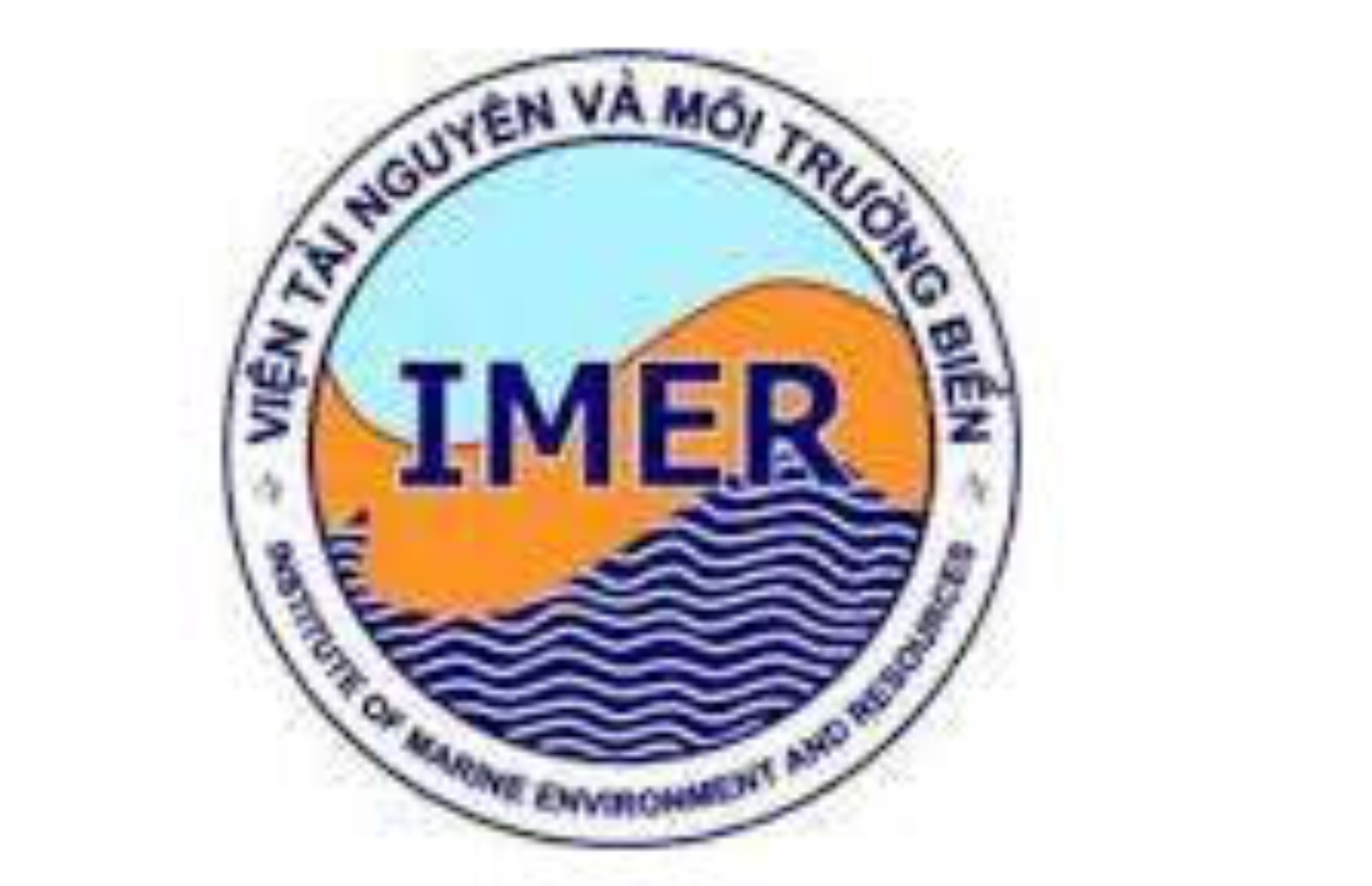Utilization of the light density to reduce the development of Lyngbya sp. and their growth on Caulerpa lentillifera J. Agardh in a recirculating aquature system
Author affiliations
DOI:
https://doi.org/10.15625/1859-3097/20/3/14880Keywords:
Caulerpa lentillifera, Lyngbya sp., light density, recirculating aquaculture system, seaweed culture.Abstract
The release of pollutants is endangering ecosystems, biodiversity and seafood. Therefore, it is of the requirement to create innovative methods in seafood production. Caulerpa lentillifera J. Agardh is a well-known seaweed for its properties and edible. We cultured C. lentillifera in a recirculating aquaculture system under laboratory conditions. However, after 7 days the culture was invaded by epiphyte algae Lyngbya sp. This experiment was designed to remove those algae by using light density as a treatment. Two irradiances were tested including 20 μmol photons m-2.s-1 (low light density) and 40 μmol photons m-2.s-1 (initial light density). Every week we measured the stolon length, thallus weight, and calculated the specific growth rate. Results showed that after 30 days C. lentillifera under low light density regained their healthy green color and Lyngbya sp. was no longer present. Meanwhile, in the initial light density (40 μmol photons m-2.s-1) Lyngbya sp. covered almost all thalli of C. lentillifera, and half of them were dead. The measured results of specific growth rate (%d-1) and weight (g) of C. lentillifera in low light density conditions were better than those of C. lentillifera in the initial condition. The light density, therefore, might be used as a treatment to remove Lyngbya sp. from Caulerpa lentillifera in aquaculture.
Downloads
Metrics
References
Chun, I. K., Lee, J. A., 1989. The effects of heavy metals in seaweeds. Korean J. Phycol., 4(2), 221–238.
![]()
Besada, V., Andrade, J. M., Schultze, F., and González, J. J., 2009. Heavy metals in edible seaweeds commercialised for human consumption. Journal of Marine Systems, 75(1–2), 305–313. Doi: 10.1016/ j.jmarsys.2008.10.010.
DOI: https://doi.org/10.1016/j.jmarsys.2008.10.010
![]()
Perryman, S. E., Lapong, I., Mustafa, A., Sabang, R., and Rimmer, M. A., 2017. Potential of metal contamination to affect the food safety of seaweed (Caulerpa spp.) cultured in coastal ponds in Sulawesi, Indonesia. Aquaculture Reports, 5, 27–33. Doi: 10.1016/j.aqrep.2016. 12.002.
DOI: https://doi.org/10.1016/j.aqrep.2016.12.002
![]()
Chávez-Crooker, P., and Obreque-Contreras, J., 2010. Bioremediation of aquaculture wastes. Current opinion in Biotechnology, 21(3), 313-317. Doi: 10.1016/j.copbio.2010.04.001.
DOI: https://doi.org/10.1016/j.copbio.2010.04.001
![]()
Lightfoot, C., Bimbao, M. A. P., Dalsgaard, J. P. T., and Pullin, R. S., 1993. Aquaculture and sustainability through integrated resources management. Outlook on Agriculture, 22(3), 143–150. Doi: 10.1177/003072709302200303.
DOI: https://doi.org/10.1177/003072709302200303
![]()
Ratana-arporn, P., and Chirapart, A., 2006. Nutritional evaluation of tropical green seaweeds Caulerpa lentillifera and Ulva reticulata. Agriculture and Natural Resources, 40(6 (Suppl.)), 75–83.
![]()
Sharma, B. R., and Rhyu, D. Y., 2014. Anti-diabetic effects of Caulerpa lentillifera: stimulation of insulin secretion in pancreatic β-cells and enhancement of glucose uptake in adipocytes. Asian Pacific Journal of Tropical Biomedicine, 4(7), 575–580. Doi: 10.12980/APJTB.4.2014APJTB-2014-0091.
DOI: https://doi.org/10.12980/APJTB.4.2014APJTB-2014-0091
![]()
Ahmad, M. R., and Yahya, M. F. (Eds.), 2014. Proceedings of the International Colloquium in Textile Engineering, Fashion, Apparel and Design 2014 (ICTEFAD 2014). Springer. Doi: 10.1007/978-981-287-011-7.
DOI: https://doi.org/10.1007/978-981-287-011-7
![]()
Marungrueng, K., and Pavasant, P., 2006. Removal of basic dye (Astrazon Blue FGRL) using macroalga Caulerpa lentillifera. Journal of Environmental Management, 78(3), 268–274. Doi: 10.1016/j.jenvman.2005.04.022.
DOI: https://doi.org/10.1016/j.jenvman.2005.04.022
![]()
Bambaranda, B. V. A. S., Tsusaka, T. W., Chirapart, A., Salin, K. R., and Sasaki, N., 2019. Capacity of Caulerpa lentillifera in the removal of fish culture effluent in a recirculating aquaculture system. Processes, 7(7), 440. Doi: 10.3390/ pr7070440.
DOI: https://doi.org/10.3390/pr7070440
![]()
Bambaranda, B. V. A. S., Sasaki, N., Chirapart, A., Salin, K. R., and Tsusaka, T. W., 2019. Optimization of macroalgal density and salinity for nutrient removal by Caulerpa lentillifera from aquaculture effluent. Processes, 7(5), 303. Doi: 10.3390/pr7050303.
DOI: https://doi.org/10.3390/pr7050303
![]()
Guo, H., Yao, J., Sun, Z., and Duan, D., 2015. Effects of salinity and nutrients on the growth and chlorophyll fluorescence of Caulerpa lentillifera. Chinese Journal of Oceanology and Limnology, 33(2), 410–418. Doi: 10.1007/s00343-015-4105-y.
DOI: https://doi.org/10.1007/s00343-015-4105-y
![]()
Paul, N. A., and de Nys, R., 2008. Promise and pitfalls of locally abundant seaweeds as biofilters for integrated aquaculture. Aquaculture, 281(1–4), 49–55. Doi: 10.1016/j.aquaculture.2008.05.024.
DOI: https://doi.org/10.1016/j.aquaculture.2008.05.024
![]()
Apiratikul, R., Marhaba, T. F., Wattanachira, S., and Pavasant, P., 2004. Biosorption of binary mixtures of heavy metals by green macro alga, Caulerpa lentillifera. Songklanakarin J. Sci. Technol., 26(2), 199–207.
![]()
Johnson, B., and Gopakumar, G., 2011. Farming of the seaweed Kappaphycus alvarezii in Tamil Nadu coast-status and constraints. Marine Fisheries Information Service, (208), 1–5.
![]()
Arthur, K. E., Paul, V. J., Paerl, H. W., O’Neil, J. M., Joyner, J., and Meickle, T., 2009. Effects of nutrient enrichment of the cyanobacterium Lyngbya sp. on growth, secondary metabolite concentration and feeding by the specialist grazer Stylocheilus striatus. Marine Ecology Progress Series, 394, 101–110. Doi: 10.3354/meps08311.
DOI: https://doi.org/10.3354/meps08311
![]()
Jones, K. (1990). Aerobic nitrogen fixation by Lyngbya sp., a marine tropical cyanobacterium. British Phycological Journal, 25(3), 287–289. Doi: 10.1080/00071619000650291.
DOI: https://doi.org/10.1080/00071619000650291
![]()
Downloads
Published
How to Cite
Issue
Section
License
Copyright (c) 2020 Vietnam Journal of Marine Science and Technology

This work is licensed under a Creative Commons Attribution-NonCommercial-NoDerivatives 4.0 International License.









